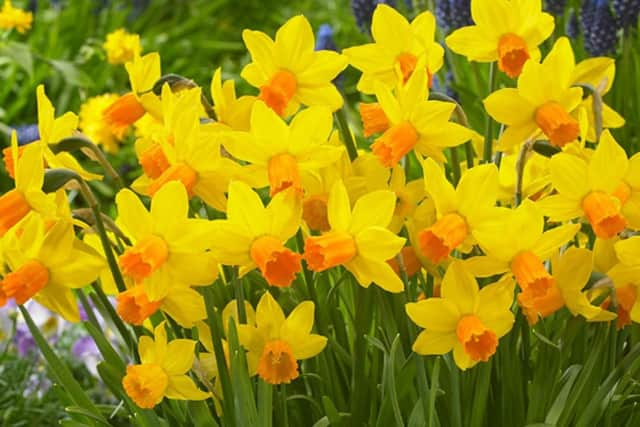Plant daffs now and you'll almost be able to sniff spring '“ Brian Kidd


They're good value for money and if the job is done well you should enjoy seeing the flowers for a number of years to come, particularly if you can leave them where they may naturalise.
If bulbs are taken out of the ground and allowed to dry off during the summer, the blooms will not be so good the following year and if the practice continues, eventually you'll have no flowers at all.
Advertisement
Hide AdAdvertisement
Hide AdDaffodils and narcissus are not too fussy. Find a spot which has lots of light for most of the day, although partial shade will not be a problem.
If you regularly read this column you will know I rarely recommend mixed plantings and this is something I would avoid when choosing bulbs.
Mixed are cheaper of course but the problem is that the early flowers die leaving the dead blooms behind. You then have the main show of blooms spoiled by dead flowers and when the later ones appear, the whole effect is ruined by those brown flowers.
What would you recommend then, I hear you cry?
Select bulbs which have names. Look out for Rembrandt as one of the boldest daffodils and plant another variety next to it. See if you can find Sempre Avanti which is a wonderful narcissus with white petals and an orange circular centre.
Advertisement
Hide AdAdvertisement
Hide AdIf you enjoy fragrance, look for the narcissus called Geranium. There are several white flowers on each stem but the orange circle in the centre looks lovely.
If you have shrubs then a group of daffs or narcissus planted around the shrubs means they are out of the way when it comes to doing the digging and the spring effect is admirable.
The planting depth is important. If bulbs are planted too shallow, the blooms will fail to open properly. The same applies if they are planted too late. Plant so there is a covering of two or three inches of soil over the top of each bulb. If the soil is very heavy, half a handful of sharp sand under each will help.
There's no need to add fertiliser to the soil. If you want to feed the bulbs, wait until they flower '“ the soil will be warmer and the bulbs will absorb the food. Bulbs are miraculous wonders of creation as the blooms are already in the bulb, so all we need is light, water and air. The soil is only really there to stop them falling over.
Advertisement
Hide AdAdvertisement
Hide AdIf your bulbs looked poor last year and the leaves streaky and brown this was possibly because of narcissus fly which lays eggs in the bulbs just as the foliage is starting to die back. A dusting of Doff ant killer all around the bases of the bulbs next spring will keep the fly at bay.
Or you could dig them out and and start afresh. If you really don't want to plant any more bulbs, ask yourself: are the flowers as lovely as they were in 1954 when you last planted some?
If not, go and buy some bulbs to bring spring a little closer.
THIS WEEK'S TOP TIP
Even if you don't have a garden, narcissus bulbs can be planted in pots now. Don't force  them. P ot them five in a five-inch diameter pot, moisten the compost and leave outside in the open. They'll flower in early spring.
Â
Â